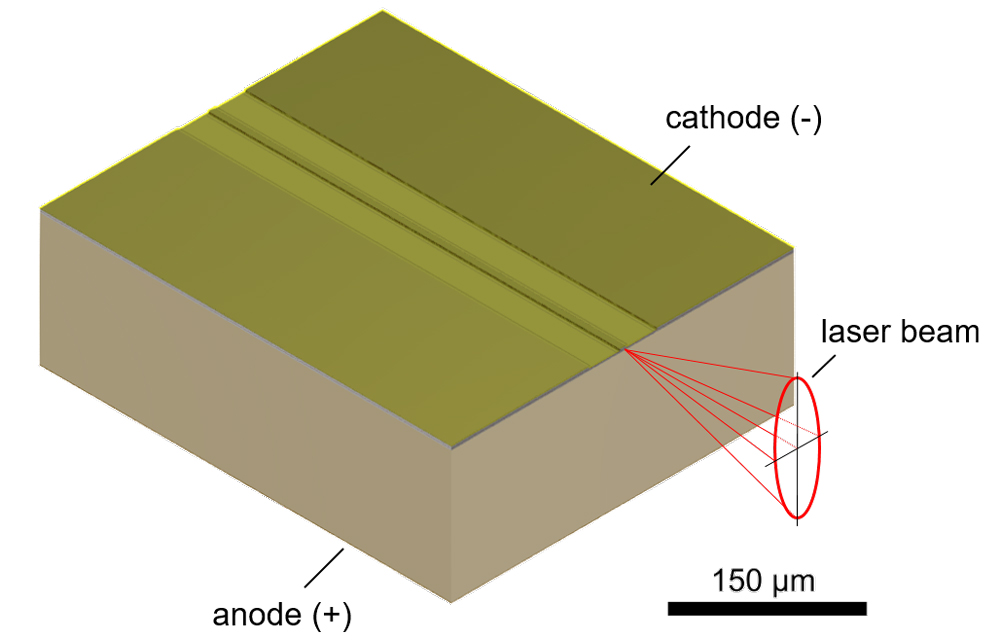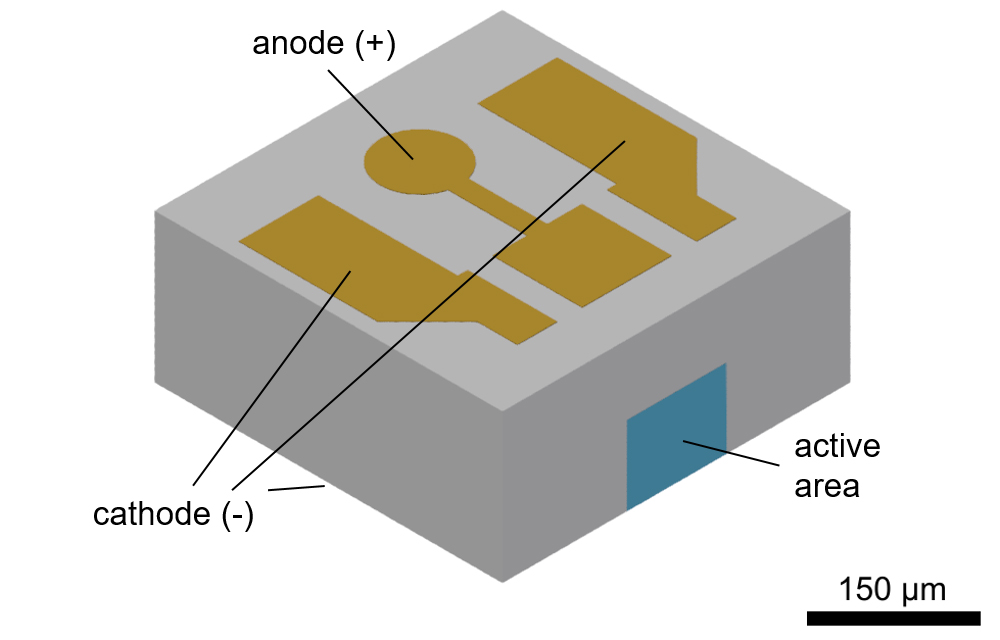The researchers are developing an example component in the Cluster of Excellence to demonstrate that optical waveguides can be printed – and that optical waveguides offer advantages over electrical circuits.
Demonstrator component: Optical decimal binary converter
The optical decimal binary converter transfers numbers from the everyday tens system into the digital binary system – i.e. into a notation that only uses the digits 0 and 1. To build such an optical converter, laser and photodiodes are required. The laser diode generates the optical signal and the photodiode converts it back into an electrical signal.
The laser and photodiodes are connected by several optical waveguides, which the scientists at ITA have produced using the flexographic printing process. In these waveguides, light is transmitted from one end to the other with low loss by total reflection – comparable to a glass fiber.
A closer look at the optical network (see Figure 1) reveals a similarity to electrical circuits. However, there are some differences to conventional circuits. For example, two lines can cross each other without interfering with each other – they simply radiate through each other in a jumbled fashion. A short circuit cannot occur here. This additional freedom in design enables new types of network concepts in one plane, so that circuits can be manufactured in even less space.
Electrical contacting of the light sources and light sinks
The researchers use an edge-emitting laser diode as the optical transmitter or light source. The laser diode has no housing and is only 0.3 mm long, 0.3 mm wide and 0.1 mm high. The electrical contacts are on opposite sides (see Figure 2).
An unpackaged chip is also used as a receiver or light sink, namely an edge-receiving photodiode. It has a length and width of 0.35 mm each and a height of 0.15 mm. The active area, i.e. the area in which the incoming light can be detected, is highlighted in blue in Figure 3. Unlike the laser diode, the electrical contact pads are located on both the top and bottom of the diode, so it offers various possibilities for electrical contact.
Contribution to the PhoenixD Cluster of Excellence
With the development of the decimal binary converter, the scientists at ITA show that printed optical fibers are possible. Their research approaches are used in other subprojects of the Cluster of Excellence PhoenixD and are transferred to other applications – for example, in cooperation with the Institute of Forming Technology and Forming Machines (IFUM) and the Institute of Micro Production Technology (IMPT).


